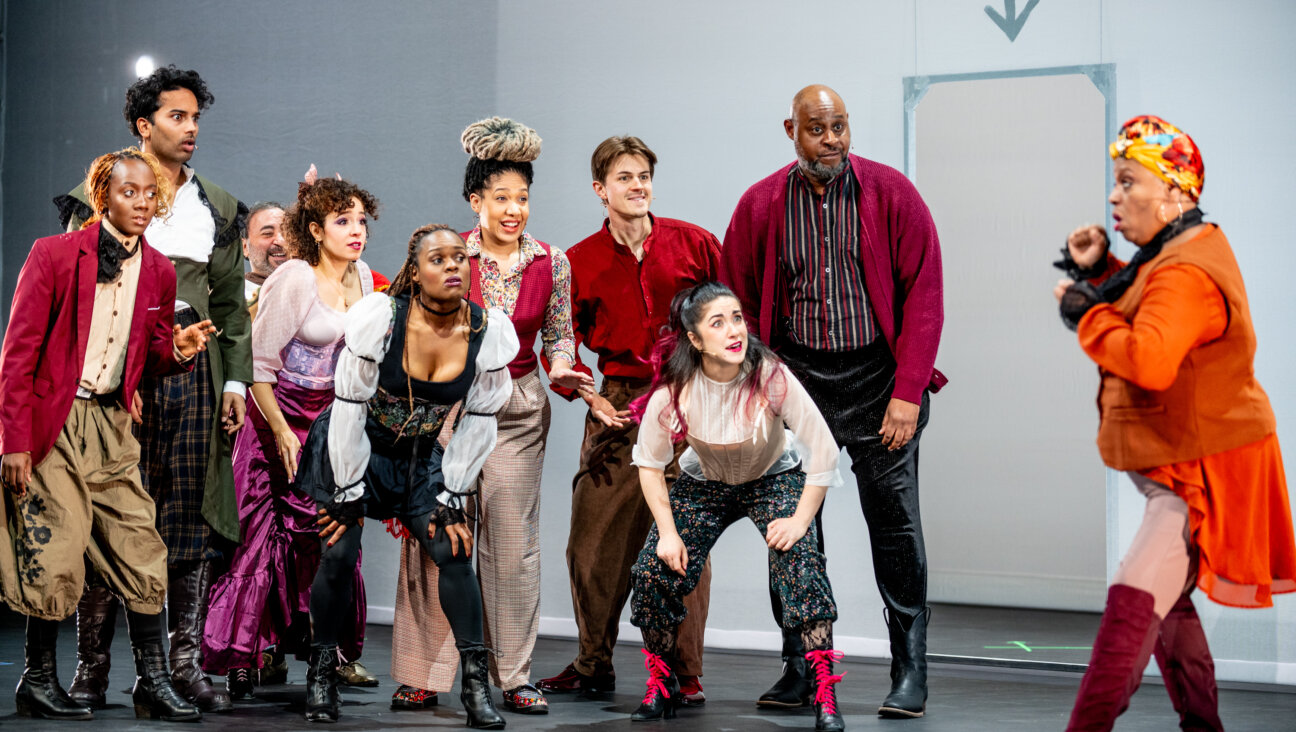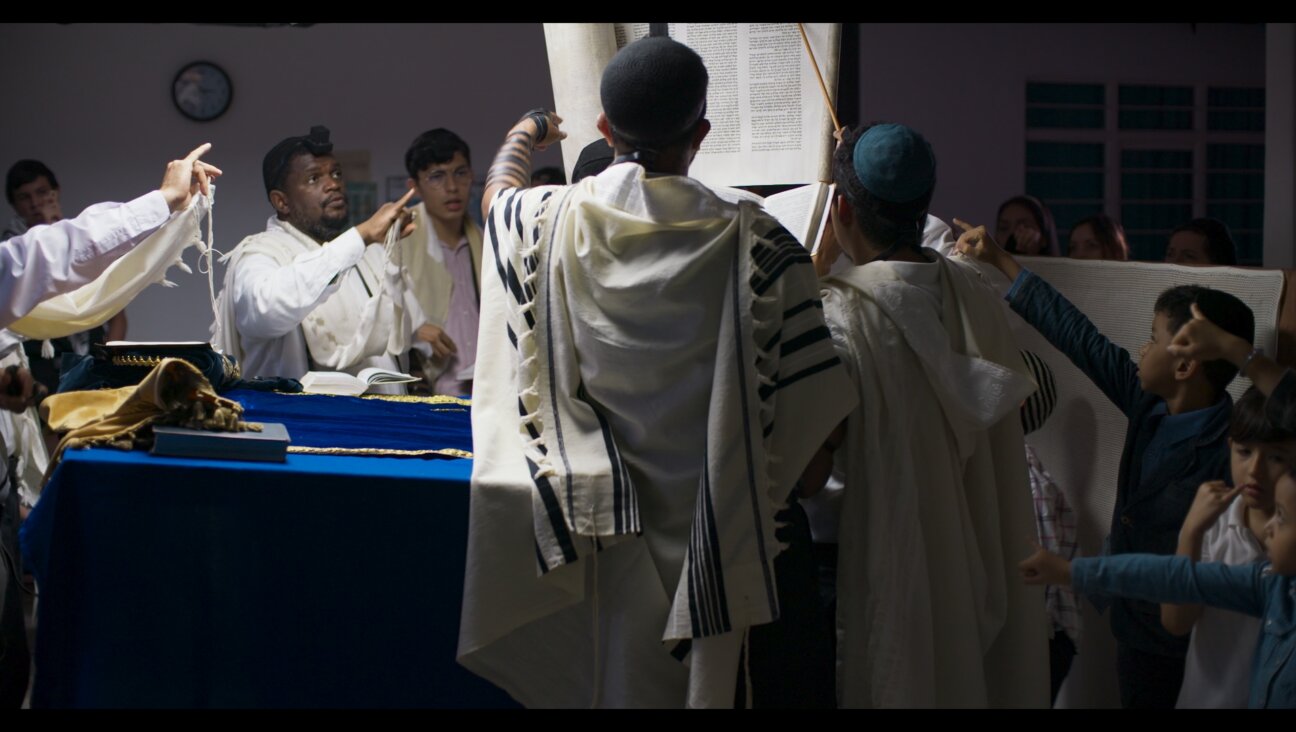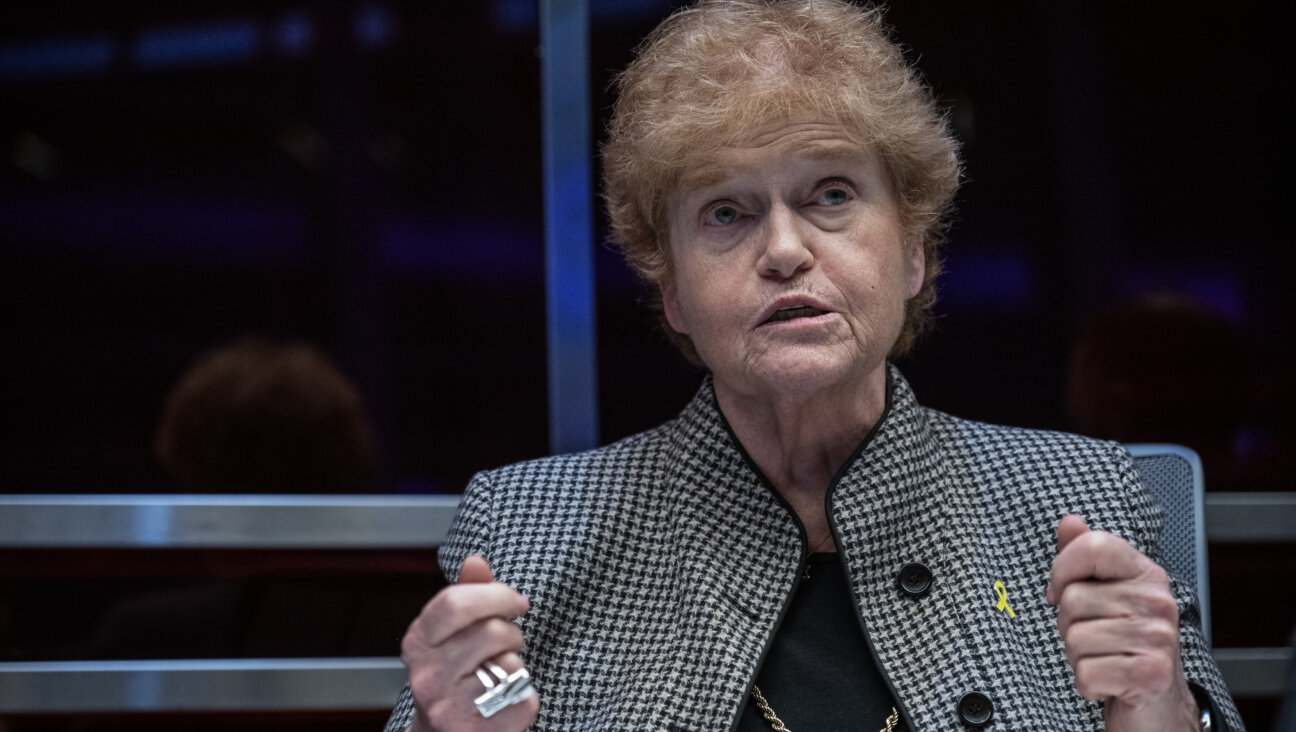A Room of Their Own –– Again; Exploring the Latest Revival in Girls’ Schools
As a veteran reporter who spent years covering California’s male-dominated State House, Ilana DeBare had long seen that women were disadvantaged in a system fueled by the late-night backroom deals of chummy male insiders. But when she started covering the state’s booming technology industry — a new field, allegedly driven more by innovation than by connections — she was disappointed to discover yet another sector in which men ran the whole show.
“The P.R. people were women, and then I’d go to events and all the engineers and executives would be men,” DeBare said in a recent interview with the Forward. “It was much more stark than other environments I’d been in.” In response, the self-described feminist, who pushed for women’s studies while attending Harvard in the late 1970s, examined the causes of the disparity and found “that women aren’t coming out of the education system with the interests, the skills and the background to move into these positions.”
That discovery, as well as the birth of her daughter in 1994, spurred DeBare to help found the Julia Morgan School for Girls, located in Oakland, Calif., in 1999. The school is one of 40 all-female academies opened in the last decade alone by parents and educators. Determined to raise strong, independent women who will go everywhere — from the State House to Silicon Valley and beyond — these trendsetters believe that girls can thrive in a classroom all their own.
“You just look at the numbers of high-achieving women who come out of girls’ schools and women’s colleges,” said Judith Shapiro, president of New York’s Barnard College. “Women do not get to have an equal share of the good things in life yet, and I think women’s institutions prepare women to feel that they’re entitled to that, that they have an equal place at the table.”
While single-sex environments are certainly not new — this country’s first female academies opened in the wake of the American Revolution — the majority of public schools always have been coeducational, as economic conditions only allowed for a one-room schoolhouse. Private girls’ schools dwindled with the rise of feminism and coeducation in the 1970s, and in the years since, girls’ schools often have been stereotyped as snooty and precious throwbacks, even though many had radical roots.
In her new book, titled “Where Girls Come First” (Jeremy P. Tarcher), DeBare combines an account of Julia Morgan’s creation with a look at this history. It includes the story of Emma Willard, who, as the founder of the Troy Female Seminary (a school that now bears her name), corresponded with presidents, lobbied for state funding and opened up new horizons to students like Elizabeth Cady Stanton. And while for years many private schools practiced ethnic exclusion — in the 1940s, DeBare’s own stepmother experienced antisemitism as one of a few Jewish students at the Masters School — single-sex public academies served girls from a variety of backgrounds. New York City’s Hunter High School, which went coed in 1975, counts historian Lucy Dawidowicz and author Cynthia Ozick among its graduates, while Judith Rodin, the first female president of the University of Pennsylvania, attended the Philadelphia High School for Girls.
If earlier generations of single-sex schools helped break down educational and professional barriers, today’s all-girls schools revival — which, by DeBare’s estimate, includes an enrollment growth of 15% between 1991 and 2001 — is focused on the subtler challenges facing girls. In particular, psychologist Mary Pipher’s 1994 book, “Reviving Ophelia” (Putnam Publishing Group), raised awareness about the pressures that many adolescents feel to be super-skinny and hypersexual. “At 10 they’re trying to dress like Britney Spears, and at 7 or 8 they’re watching MTV with dancers that look like, you know, hookers,” DeBare explained. “Girls’ schools can help parents give their daughters a message: ‘You’re okay who you are; it’s okay to be smart, it’s okay to be strong.’”
The power of this message, the writer believes, stems from the “alternative reality” created by the single-sex environment — one in which girls play all the roles from team captain and class president to math whiz and, in the case of 17-year-old Jenna Berger, science buff. Her mother, Claire, sent her to Los Angeles’s Archer School for Girls in order to “give her a strong sense of self-esteem and great leadership training,” and was thrilled to see her daughter become so interested in marine ecology last year that she and her friends petitioned to have a second year added to the curriculum. (While no conclusive data exists about the impact of single-sex classrooms on the numbers of girls specializing in the sciences, a 1999 study of 4,000 alumnae of girls’ schools found that 13% majored in math or sciences at the college level, as opposed to 2% of females nationwide.)
To be sure, proponents of single-sex education are careful to point out that single-sex schools are not all alike. “We need to look at how any girls’ school or women’s college speaks about the advantages of their school,” Barnard’s Shapiro said. “Some people may justify all-women’s institutions in a way that reinforces gender stereotypes.”
Indeed, the rationale behind all-female institutions has changed over time. While the first girls’ schools, like the Troy Female Seminary, promoted the radical idea of female education, in later generations some single-sex schools — including, in the Jewish community, the Bais Yaakov schools and Yeshiva University’s Stern College for Women (see sidebar) — sought to adhere to religious mores dictating the separation of the sexes.
Particularly with the wave of feminism in the 1960s and ’70s, many came to view all-female environments as embodiments of a system of separate and unequal education. For example, Western High School — widely respected as the oldest public secondary girls’ school in America, and the alma mater of Hadassah founder Henrietta Szold — shares a campus with Baltimore Polytechnic Institute, a specialized science academy that was closed to girls until the passage of Title IX in 1972.
Even today, single-sex schools are justified for a variety of reasons that might not always have to do with empowering girls, including eliminating the “distractions” posed by the opposite sex. At least three-quarters of the recent growth in single-sex schools is made up of public academies — like New York City’s Young Women’s Leadership School, and the San Francisco 49ers Academy — which have opened to boost urban achievement and sometimes share campuses with companion boys’ academies. Both the National Organization for Women and the American Civil Liberties Union have opposed the opening of new single-sex public schools.
For her part, DeBare views single-sex education as complementing rather than replacing coed opportunities. “I would probably not send my child to single-sex schools for all 12 years,” she said. “One of the wonderful things about America is that men and women can be friends and colleagues, and they’re not just sexual objects, they’re not just alien beings to each other, and I think schooling is part of that.”
For now, the girls of Julia Morgan are thriving in a classroom all their own. The school, now in its sixth year, currently has 159 students, up from 35 in the first year. Last year, more than 100 applicants applied for 55 slots in the sixth-grade class. And the school recently signed a 25-year lease that gives it a permanent home on the Mills College campus, in a building designed by architect Julia Morgan herself.
“It has been so much more than I had imagined,” DeBare said. “It reminds me of the scene in ‘Wizard of Oz’ when you go from black-and-white to color and [Dorothy] goes from Kansas to Oz.”
Jennifer Siegel is a writer living in New York.
A message from our Publisher & CEO Rachel Fishman Feddersen

I hope you appreciated this article. Before you go, I’d like to ask you to please support the Forward’s award-winning, nonprofit journalism so that we can be prepared for whatever news 2025 brings.
At a time when other newsrooms are closing or cutting back, the Forward has removed its paywall and invested additional resources to report on the ground from Israel and around the U.S. on the impact of the war, rising antisemitism and polarized discourse.
Readers like you make it all possible. Support our work by becoming a Forward Member and connect with our journalism and your community.
— Rachel Fishman Feddersen, Publisher and CEO























